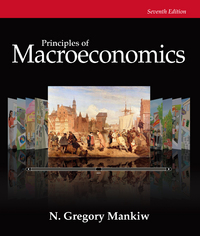:' DEPARTMENT OF ECONOMICS ;F,L ECON1012: Principles of Economics I '.LL Problem Set 16: Money and Banking 3111)2::;15 system has $500m m chequing deposits, $600m in savings deposits, $950m cc.)nsun}er? a_nd businesses, $400m in government securities, and $50m in currency. Private individuals are holding $100m in cash ' a) What is the value of reserves? b) What is the value of the money supply? ) What is the reserve ratio on chequing deposits? 2. Visit the Bank of Jamaica web site at www.boj.org.jm. Go to: Statistics / Economic Data / Monetary Authorities / Monetary Survey Local Currency Only. Download and open the spreadsheet. a) Which of those columns reflect the \"M1\" definition of the money supply? b) How much was the money supply in June 2016? ) What portion of M1 was made up of currency in August, October, and December 20167 Does that pattern exist in previous years? Why do you think that is? 1. Calculate the value the money supply (assuming the public holds no currency) if a) the amount of reserves is $4,000 and the reserve ratio is 25%. b) the amount of reserves is $45.6b and the reserve ratio is 14%. ) the amount of reserves is $45.6b and the reserve ratio is 100%. 4. Look again at the information in question 1 above. Suppose the central bank conducted an open market purchase of $50m. After the banking system had time to fully adjust, and assuming there is no change in the reserve ratio, the desire to put money in savings accounts, or the amount of cash that people desire to hold. a) What is the value of reserves? a) By how much will the money supply have expanded? 5. What do you expect to happen to the money supply if... a) the central bank sells securities on the open market. b) the central bank raises the rate of interest it is offering on its 30-day certificates-of- deposit. ) the central bank lowers the reserve requirement from 12% to 10%. d) due to a widespread expectation of hard times ahead, banks choose to limit their exposure to bad debts and increase their holdings of excess reserves. e) the central bank raises the borrowing rate for commercial banks at its discount window. f) the government receives a U.S. dollar loan and exchanges it for local currency at the central bank so it can pay public sector salaries in Jamaican dollars. g) people withdraw money from their bank accounts to have cash for Christmas shopping. h) the use of debit cards grows in popularity. Nt







